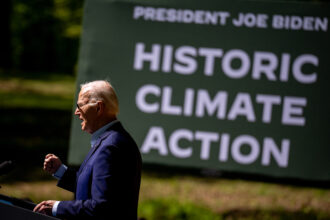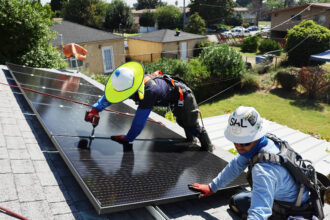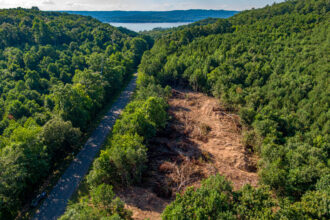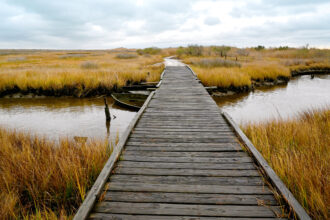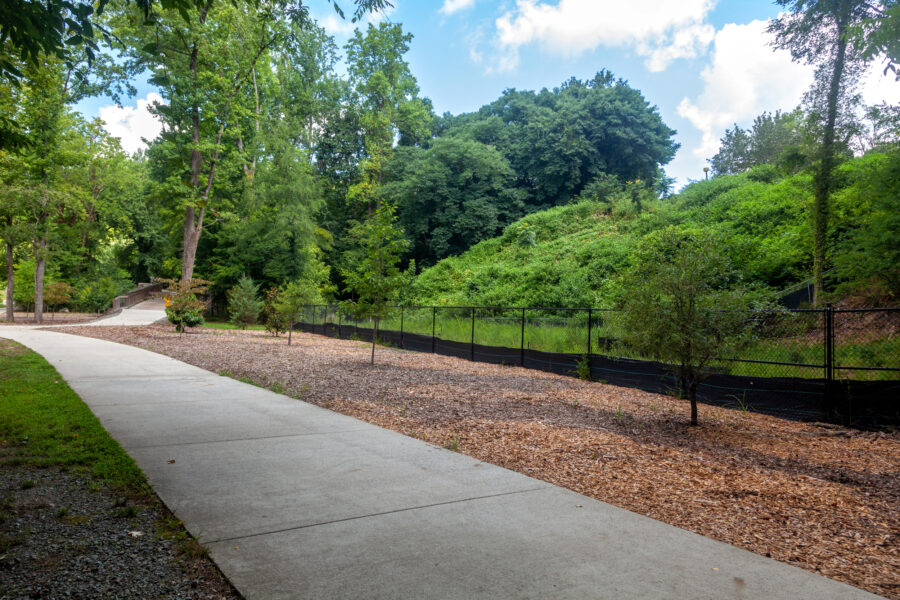In American Samoa, sea level is rising at four times the global average. This increases the Pacific Ocean island’s risk of saltwater intrusion, which can contaminate freshwater supplies, a problem it currently faces.
Vacancies in American Samoa’s only agency managing water—the American Samoa Power Authority—are leaving a shortage of people to tackle these climate issues. The vacancies are also leaving a newly built filtration plant without 24/7 staffing.
“We’ve been seeing increasing amounts of saltwater intrusion, and that’s required a lot of additional expertise that we don’t have here,” said Kelley Anderson Tagarino, the American Samoa extension specialist at the American Samoa Community College. “It’s not so much a distinction in skills as it is that we don’t have the privilege of specialization here. You need to be a generalist.”
But a new National Oceanic and Atmospheric Administration initiative will make it possible for American Samoa to train new workers with the skills to manage the island’s saltwater intrusion and other environmental issues by providing more than $1 million in funding.
That’s part of NOAA’s Climate-Ready Workforce effort, which committed $60 million in funding to nine projects across 10 U.S. states and territories last month. The initiative aims to train professionals for jobs that increase climate resilience.
Funding comes from the Biden administration’s Inflation Reduction Act of 2022. The programs will be based in American Samoa, Alaska, California, Washington, Texas, Louisiana, Massachusetts, Ohio, Puerto Rico and the U.S. Virgin Islands.
The official statement announcing the initiative said that it “will also assist employers in developing a 21st-century workforce that is climate literate and skilled at addressing climate challenges.”
The nine projects were picked from a pool of 95 applicants. According to Joshua Brown, the National Sea Grant Office’s environmental literacy and workforce development lead, the proposals were judged by experts with knowledge of climate resilience, workforce development and working with underserved communities. Organizers wanted to fund a combination of projects that would offer the most diverse set of skills to workers.
The selected projects will support training and skill development for jobs including dry floodproofing that makes building walls watertight in Louisiana, water and wastewater treatment operations in American Samoa and solar installation in California. According to Brown, just under 3,000 employers have committed to hire workers trained by the initiative, and NOAA is optimistic that the number of jobs will grow. “The people who get trained have a position waiting for them,” he said.
With a population of roughly 45,000, one person plays many roles in American Samoa, and it isn’t feasible for workers to travel overseas for training. According to Tagarino, the grant will allow them to appoint a trainer who will visit twice a year for two months to provide instruction for working people in their off-hours to develop the skills needed to fill vacancies at the American Samoa Power Authority. An assessment of the facilities and skills required to operate them will dictate the course of the training.
Of the overall Climate-Ready Workforce funding, $50 million will be dedicated to helping set up the projects with an additional $10 million set aside for “technical assistance,” which will be used to track training participants’ progress and career development. “It’s there to help us help the grantees be successful,” said Brown.
The funding is intended to run over a period of four years, after which the projects are expected to find other funding to support their training needs. As governments continue to invest heavily in building climate-resilient workforces and industries, experts say the efforts need to be more well-rounded.
Meena Naik, director of SkillsFirst Design, and her team at Jobs For the Future have been researching the future of green jobs. They concluded that the future of the corporate world lies in “green skills” and not so much in “green jobs.”
According to Naik, the efforts to upskill climate-resilient workers needs to be more far-sighted. The training and skill development required to fill industry gaps changes periodically. Managing data, for instance, was once a skill only required by data analysts. But as the data and tech industry continues to grow, most if not all workers are expected to know the basics of data management. Naik believes that as the green sector expands, the skills once considered only useful for climate resilience jobs will spill over into other industries, making them more essential to a wider range of workers.
This story is funded by readers like you.
Our nonprofit newsroom provides award-winning climate coverage free of charge and advertising. We rely on donations from readers like you to keep going. Please donate now to support our work.
Donate Now“We’re seeing an infusion to jumpstart something,” she said. “What we would like to see is that this becomes a sustained practice change.”
Part of this evolution would address questions about how basic green skills are being incorporated in education systems, and how employees in declining industries, such as coal, are being compensated and retrained to transition to other fields like renewable energy.
“So how are people getting access to this education sooner?” Naik asked. “How are they being upskilled? And then how are these places that are losing workers because those jobs are disrupted, or they’re no longer maintaining the same number of opportunities that were once there, how are those people being identified because of the unique skills they already have?”
While the range of green jobs continues to grow, Naik warned that some people will be left behind if enough efforts aren’t made to lift them up.
That includes not only employees whose jobs could disappear, she said, but also those whose work makes them vulnerable to extreme climate events.
About This Story
Perhaps you noticed: This story, like all the news we publish, is free to read. That’s because Inside Climate News is a 501c3 nonprofit organization. We do not charge a subscription fee, lock our news behind a paywall, or clutter our website with ads. We make our news on climate and the environment freely available to you and anyone who wants it.
That’s not all. We also share our news for free with scores of other media organizations around the country. Many of them can’t afford to do environmental journalism of their own. We’ve built bureaus from coast to coast to report local stories, collaborate with local newsrooms and co-publish articles so that this vital work is shared as widely as possible.
Two of us launched ICN in 2007. Six years later we earned a Pulitzer Prize for National Reporting, and now we run the oldest and largest dedicated climate newsroom in the nation. We tell the story in all its complexity. We hold polluters accountable. We expose environmental injustice. We debunk misinformation. We scrutinize solutions and inspire action.
Donations from readers like you fund every aspect of what we do. If you don’t already, will you support our ongoing work, our reporting on the biggest crisis facing our planet, and help us reach even more readers in more places?
Please take a moment to make a tax-deductible donation. Every one of them makes a difference.
Thank you,








